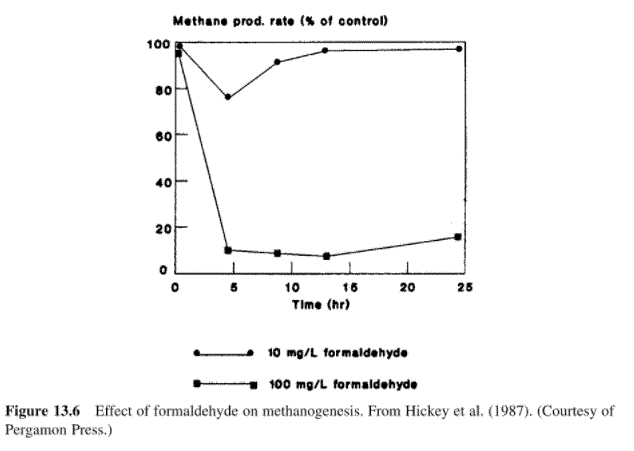Interested in Trucks?
Get Trucks articles, news and videos right in your inbox! Sign up now.
Trucks + Get AlertsFormaldehyde (FA) is still the most widely used chemical in recreational vehicles, although its use is decreasing. It is typically mixed with methyl alcohol, and is blue-colored and perfumed.
The EPA recognizes it as a probable carcinogen with moderate toxicity to humans, and established a lethal dose for a 150-pound person at 1 ounce to 1 pint. The same EPA document indicates that it kills or retards bacterial growth. In fact, concentrated solutions of FA are used as an industrial disinfectant.
FA has been reported to be a strong inhibitor of all microorganisms involved in anaerobic degradation, although no information about its inhibition pattern has been given so far. The first works carried out with formaldehyde under anaerobic conditions reported that among all saturated aldehydes present in petrochemical wastewaters, FA is the most toxic to anaerobic bacteria, exerting significant inhibitory effects at concentrations higher than 200 mg/L. That toxic effect, however, can be detected at much lower FA concentrations, such as 50 mg/L. The figure below from Hickey et al. (1987) shows that at 100 mg/L there is a dramatic decrease in production of methane compared to a control. This methane production was measured under optimum conditions. Even at 10 mg/L, the production is greatly decreased for the first five hours. Therefore, if there are constant additions of FA to a system, the microbes could be dramatically decreased. It should be noted that septic tanks are not optimum aerobic digesters and that these test were done in a lab, but the results are still interesting.

In another study published in 1994 by the state of Washington, the Microtox toxicity test was used to measure the change in oxygen uptake by sewage-degrading microorganisms as an indicator of toxicity. Formaldehyde-methanol formulation showed the greatest toxicity. The adverse impact of the additive on the oxygen uptake rate showed that the formaldehyde-methanol had a biocidal effect while enzyme formulations had no effect.
Alternatives
The best option when it comes to odor control in RVs is to not use formaldehyde. Recommend enzyme-based or bacterial-based products. Please note that the term biodegradable does not necessarily mean that the product is safe for humans or the environment. All the manufacturers of RV chemicals have developed formaldehyde-free products.
Several states either already have legislation in place or have proposed legislation that would ban the use of FA from being used in a sewage system.
Additional resources
extension.arizona.edu/sites/extension.arizona.edu/files/pubs/az1233.pdf
depts.washington.edu/trac/bulkdisk/pdf/322.1.pdf
About the author
Sara Heger, Ph.D., is an engineer, researcher and instructor in the Onsite Sewage Treatment Program in the Water Resources Center at the University of Minnesota. She presents at many local and national training events regarding the design, installation and management of septic systems and related research. Heger is education chair of the Minnesota Onsite Wastewater Association (MOWA) and the National Onsite Wastewater Recycling Association (NOWRA), and serves on the NSF International Committee on Wastewater Treatment Systems. Send her questions about septic system maintenance and operation by email to kim.peterson@colepublishing.com.






